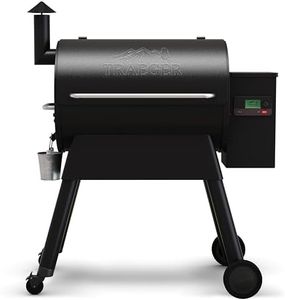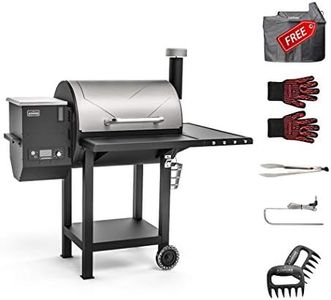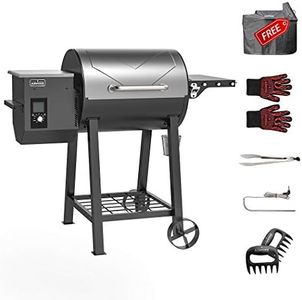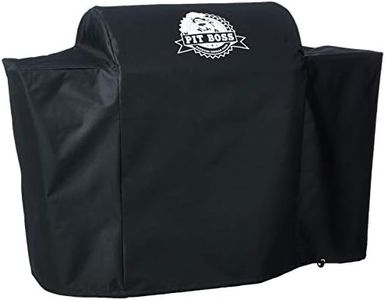We Use CookiesWe use cookies to enhance the security, performance,
functionality and for analytical and promotional activities. By continuing to browse this site you
are agreeing to our privacy policy
5 Best Pellet Grills
From leading brands and best sellers available on the web.Buying Guide for the Best Pellet Grills
Choosing the right pellet grill can be an enjoyable process if you understand the main features that affect cooking performance, convenience, and suitability for your lifestyle. Pellet grills are loved for their combination of wood-fired flavor and easy temperature control, making them great for both beginners and seasoned grillers. When exploring your options, focus on the specifications that will best match how, what, and how often you want to grill or smoke food. Paying attention to key aspects will ensure you invest in a grill that fits your cooking habits and outdoor space.Cooking AreaCooking area refers to the total amount of grill space, measured in square inches, where you can place food. This is important because it determines how much food you can cook at one time. Smaller grills (under 400 sq. in.) are ideal for singles, couples, or small families, allowing you to prepare a few burgers or steaks at once. Medium grills (400-700 sq. in.) can handle larger gatherings or several different kinds of food, while large grills (over 700 sq. in.) are best suited if you regularly entertain a crowd or want to smoke big cuts of meat. Choose a size based on how many people you typically cook for or the types of meals you enjoy making.
Temperature RangeThe temperature range tells you the lowest and highest temperatures the grill can achieve and maintain. This specification matters because it affects what cooking methods you can use, like low-and-slow smoking or high-temperature searing. A range that starts as low as 150°F is great for smoking and slow cooking, while a maximum temperature of at least 450-500°F is preferable for grilling and searing. Think about what kinds of foods and techniques interest you the most: if you love smoked brisket, prioritize a low minimum; if you want to grill steaks, look for a higher maximum.
Hopper CapacityHopper capacity describes how many pounds of wood pellets the grill can hold at once, directly influencing how long you can cook before needing to refill. Smaller hoppers (under 10 lbs) may require attention during long cook sessions, while larger hoppers (15 lbs or more) allow you to smoke foods for many hours—ideal for overnight briskets or pork shoulders. Choose a hopper size that matches your typical cooking sessions: shorter capacity is fine for quick grilling, but long smokers will appreciate the convenience of a bigger hopper.
Build MaterialThe build material refers primarily to the metal and coatings used for the main body and cooking grates. This is key because it affects durability, heat retention, and resistance to rust. Stainless steel and powder-coated steel are common, offering a balance of longevity and price. Cast iron grates tend to hold heat better for consistent cooking but may need more care. If you plan to keep your grill outside or cook frequently, prioritize models with high-quality, weather-resistant materials.
Temperature Control SystemThe temperature control system includes the digital controller and sensors that regulate pellet feed and grill temperature. This feature is important because it can mean the difference between easy, hands-off cooking and more manual management. Basic controllers let you set the temperature to a general range, while more advanced systems allow for precise adjustments and sometimes even include WiFi connectivity for remote monitoring. If you like set-it-and-forget-it cooking or want to use your smartphone to oversee the grill, look for advanced, user-friendly controllers.
PortabilityPortability refers to how easy it is to move the pellet grill around, usually affected by features like wheels, handles, and the overall weight of the unit. If you plan to keep your grill in one spot, this may be less important, but if you want to take it tailgating, camping, or just move it around your yard, lighter and more portable models are beneficial. Think about whether you value a lightweight, easily moved grill versus a heavier, more stationary one.







